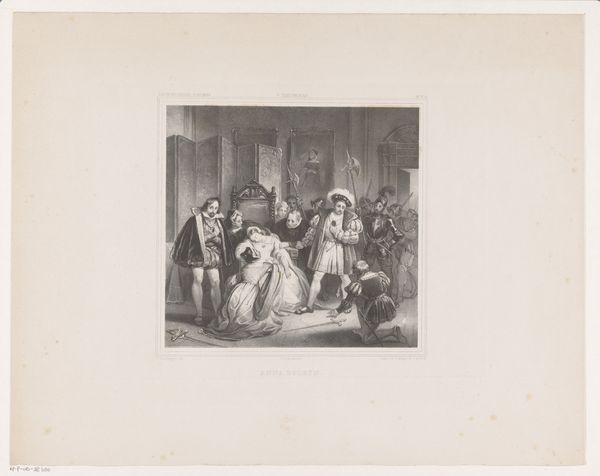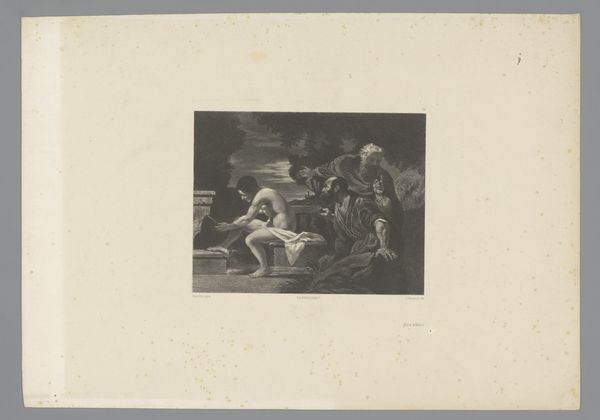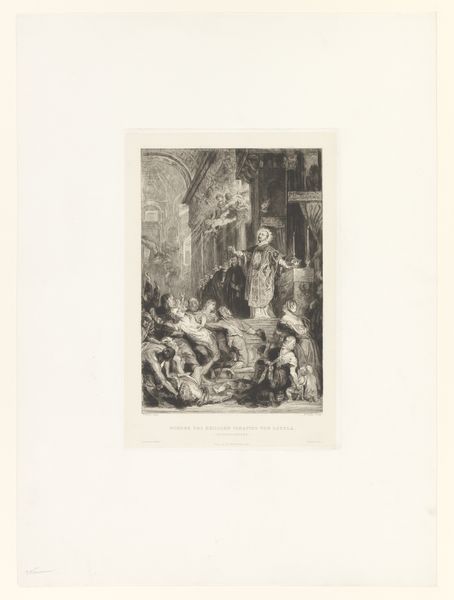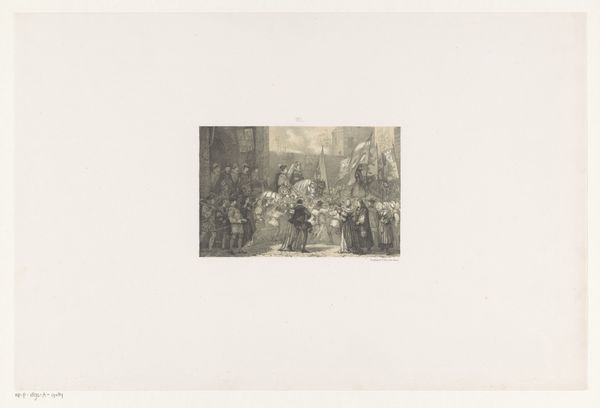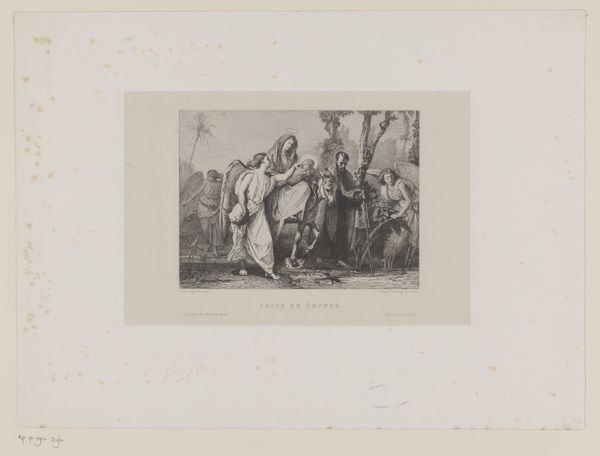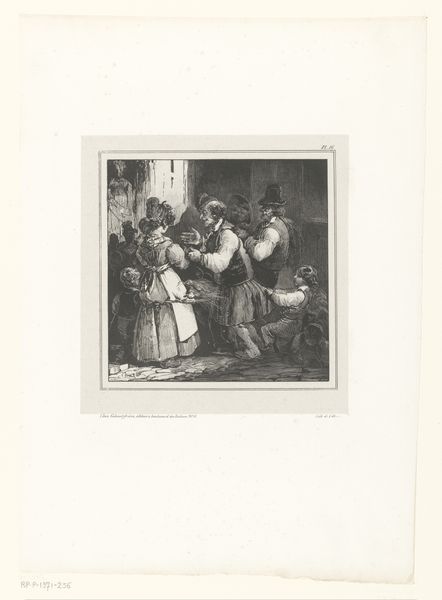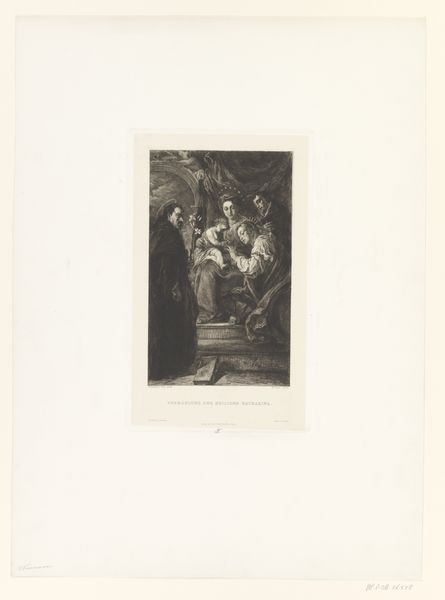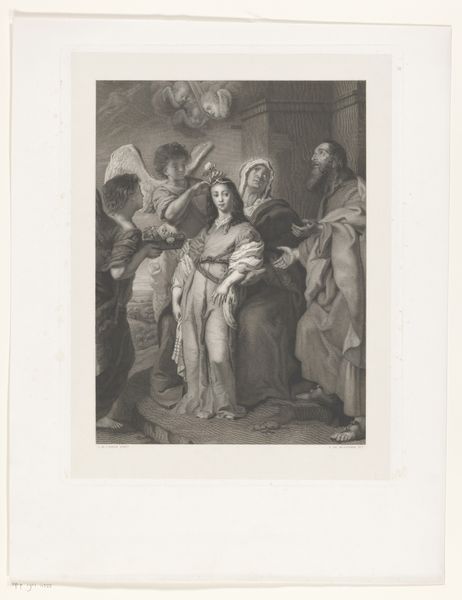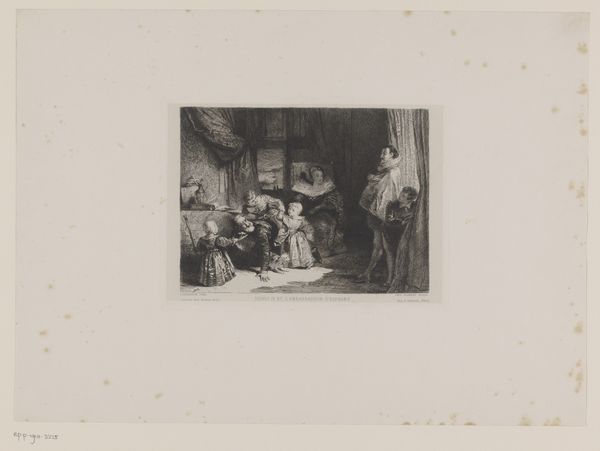
Gezelschap bewondert een schilderij en tekeningen 1847 - 1865
0:00
0:00
frederikhendrikweissenbruch
Rijksmuseum
print, engraving
# print
#
genre-painting
#
history-painting
#
engraving
Dimensions: height 354 mm, width 498 mm
Copyright: Rijks Museum: Open Domain
Editor: So this engraving, "Gezelschap bewondert een schilderij en tekeningen" by Frederik Hendrik Weissenbruch, probably made somewhere between 1847 and 1865, depicts a group of people gathered in what seems like an artist's studio, admiring a large painting. It strikes me as quite staged, like a tableau vivant. What do you see in this piece? Curator: It’s fascinating how Weissenbruch uses the visual language of genre painting to engage with discourses around spectatorship and artistic value in 19th-century Dutch society. Note how the central figures, seemingly wealthy patrons, are positioned in relation to the artwork, almost embodying a possessive gaze. The seated woman also viewing other drawings, isolated in her examination. Who benefits from the patronage that these paintings would generate? Editor: That’s interesting. I was so focused on the composition, I hadn’t considered the power dynamics at play. So, the artist might be critiquing the relationship between artists and their patrons? Curator: Precisely. And think about the concept of "bewonderen" or "admiring." Who gets to define what is admirable, and whose voices are excluded from that definition? Notice the figures obscured in the background. Could their posture signal deference to the wealthy? What socio-economic realities influence the viewers' perspectives? Editor: I see your point. It’s like Weissenbruch is subtly revealing the economic structures underpinning artistic production and reception. That adds a whole layer of complexity. Curator: Indeed. And how might those structures affect the types of art being produced? Understanding this is critical to decolonizing the art historical narrative. How do these power structures evolve even into the current system of museum curation and public art funding? Editor: That really shifts how I see the image. It's not just a depiction of people looking at art; it’s a commentary on who controls the narrative and who gets a seat at the table. Curator: Exactly. Seeing art as embedded in these systems allows us to question and hopefully dismantle those systems to benefit more art and more artists.
Comments
No comments
Be the first to comment and join the conversation on the ultimate creative platform.

